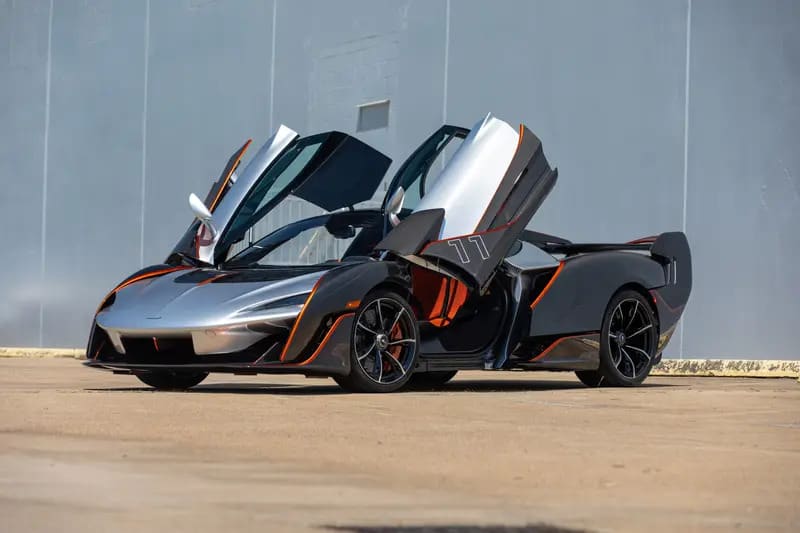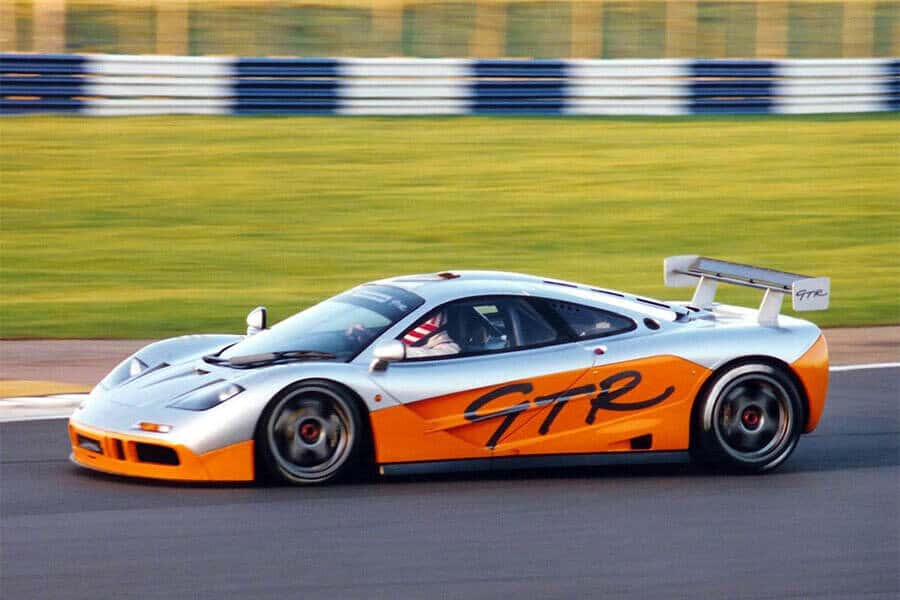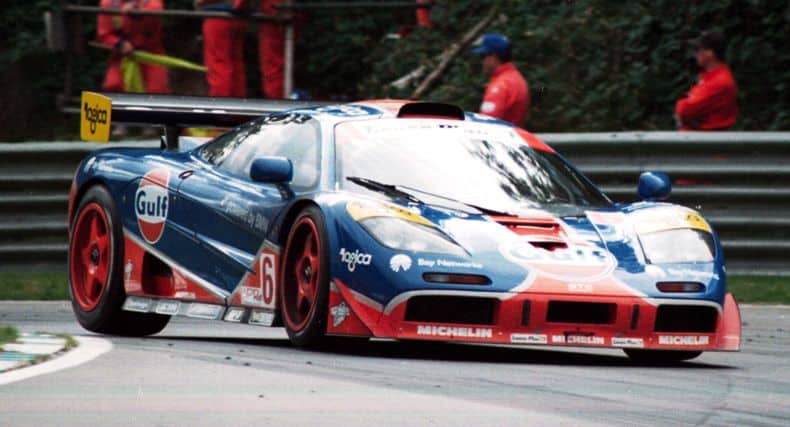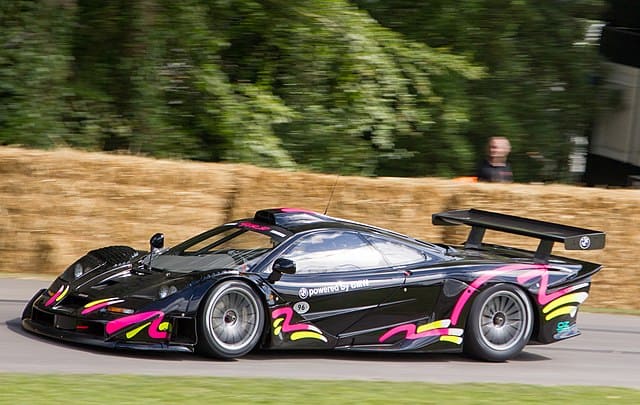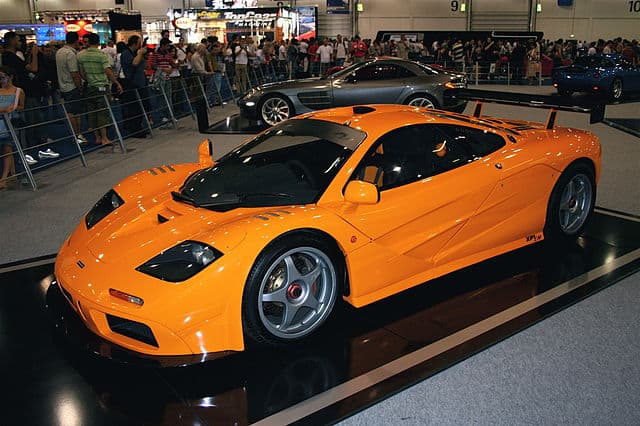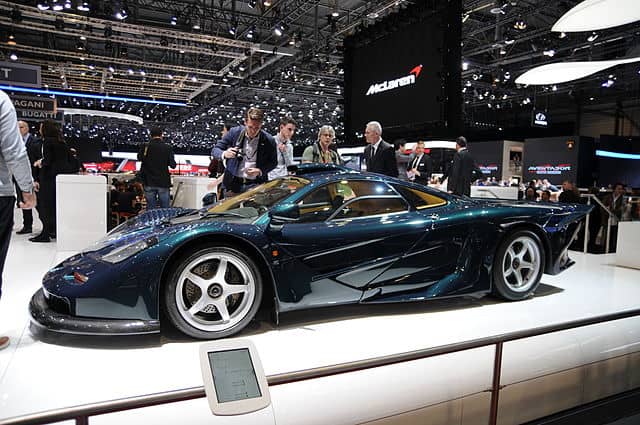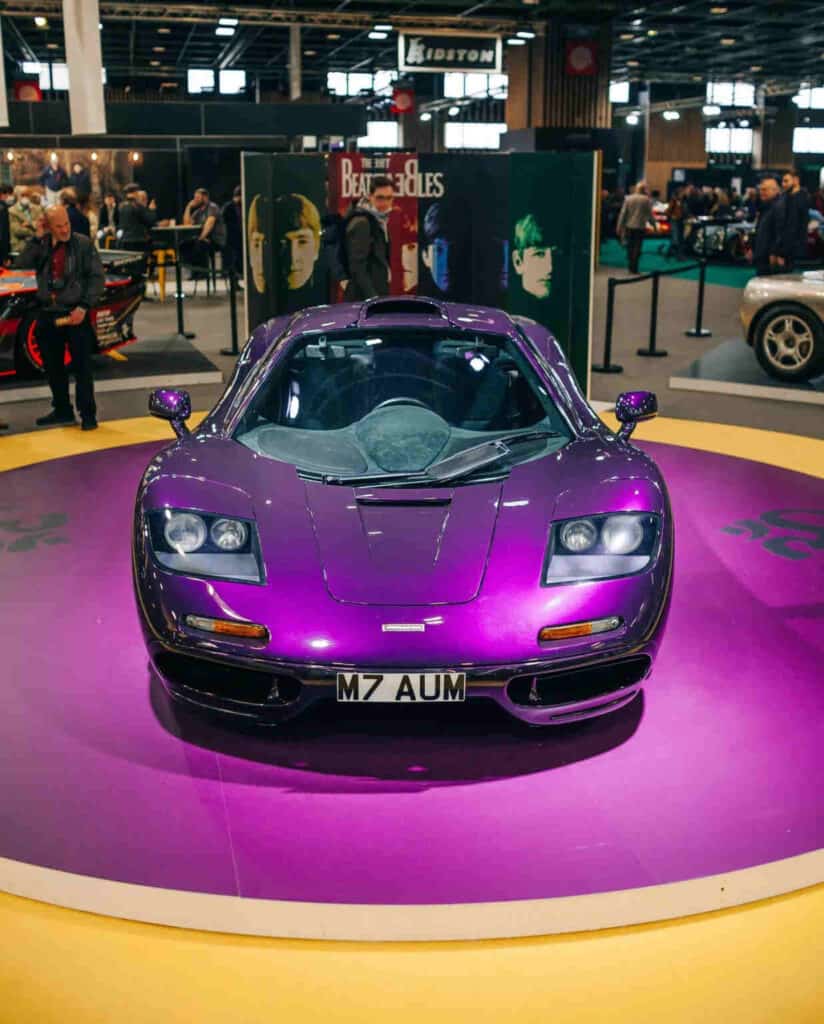British automobile manufacturer McLaren Automotive is known for producing high-speed sleek sports cars with exceptional performance. The company was formerly known as McLaren Cars, founded in 1985.
In 2010, McLaren Cars were replaced by McLaren Automotive, and now it is owned by McLaren Group. The company has been dominating the market for decades now and is best known for its expensive luxury sports cars with futuristic designs.
Besides producing its regular series, the company also produces limited-edition exclusive cars every now and then. Here, we list 9 of the rarest cars ever released by McLaren Automotive.
9. McLaren Sabre
Year of release: 2020
Top speed: 218 mph

photo source: topspeed.com
McLaren Sabre was a limited-edition supercar that was released exclusively in the US market. Only 15 examples of this car were ever made, and all were sold even before they were made.
The car is the fastest two-seater McLaren and can hit a top speed of 218 mph. The car is based on the McLaren Senna Supercar but has a unique body and more power.
The car is equipped with a 4.0-liter twin-turbocharged V-8 engine. McLaren’s Special Operations division designed the car meticulously. The company invited the customers to test drive the prototypes, and the customer’s feedback was incorporated into the design.
Did you know?
The cost of this car was not made public. However, experts believe it must be over $3 million.
8. 1995 McLaren F1 GTR
Year of release: 1995
Top speed: Just under 200mph

photo source: images.squarespace-cdn.com
When Chief Engineer at McLaren Automotive Gordon Murray designed F1 cars, he didn’t have any intention to take them to race. However, race teams saw the immense potential in this model to become an excellent racing car.
Race team owners like Ray Bellm and Thomas Bscher approached Murray to modify the car for the race. At their request, modifications were made to the existing F1 model. No extensive modifications were required as many race technologies were already used in making the F1 cars.
The interior was changed, and all luxuries were removed. Body panels, suspension, and aerodynamics were also altered. A total of 9 units of this car were produced by the company.
Did you know?
The McLaren F1 GTR secured 1st, 3rd, 4th, 5th, and 13th places in the 24 Hours of Le Mans that year.
7. 1996 McLaren F1 GTR
Year of release: 1996
Top speed: 206 mph (approx.)

photo source: wikipedia.org
As the 1995 F1 GTR was a huge success, the next McLaren decided to upgrade the model further. In 1996 F1 GTR, the front and rear bodywork were extended, and a larger splitter was attached to the front.
The weight of the car was lowered by 38kg by replacing the gearbox housing material with lighter magnesium.
Modifications were also made to the body so that it could be removed quickly for repair work. In the production process, McLaren collaborated with BMW Motorsport, who were planning to enter the racing scene.
Nine cars were made with this design, and two older GTRs were modified. In terms of straight-line speed, this 1996 model of F1 GTR was the fastest.
Did you know?
1996 McLaren F1 GTR was the first car made outside Japan that won a race in the All-Japan Grand Touring Car Championship (JGTC). David Brabham and John Nielsen drove the car.
6. 1997 McLaren F1 GTR
Year of release: 1997
Top speed: 196.97 mph

photo source: wikipedia.org
In 1997, McLaren had to modify the F1 GTR extensively to match the requirements of the new rules regarding the cars used in the Premier GT1 class and remain competitive.
A longer nose and tail were added to the body to maximize the aerodynamic downforce. A wider rear wing was also added.
Besides, ground clearance was also altered, and wheel arches were widened. The engine of the car was also modified extensively, and the gearbox was replaced by modern X-trac 6-speed sequential transmission.
Did you know?
Due to the stretched bodywork design, especially at the read, the 1997 McLaren F1 GTR is often referred to as the ‘Longtail’ version.
5. McLaren F1 LM
Year of release: 1995
Top speed: 225 mph

photo source: wikipedia.org
McLaren F1 LM was based on the McLaren F1 GTR. The standard F1 chassis was used, and necessary modifications were done to make it street-legal. This car was built to honor the five McLaren F1 GTRs that finished the Le Mans.
The weight of the car was reduced by 132 lb by removing various parts and using optional equipment. The interior had no noise suppression, no audio system, no dynamic rear wing, and no fan-assisted ground effect.
Did you know?
A total number of six McLaren F1 LM were made, including a Papaya orange prototype. Five of them were sold, and the company retained the prototype to use it as the basis for further development of the F1 chassis.
4. 1997 McLaren F1 GT
Year of release: 1997
Top speed: Over 240 mph

photo source: wikipedia.org
As the 1997 version of the F1 GTR required extensive modifications, it was not possible to build that based on the existing production road car. Thus, the company had to build production road-legal cars using the 1997 GTR bodywork. These cars are known as F1 GT.
Technically, building only one prototype GT was enough, and the company did not have to sell it. However, a total of three cars were made on the requests from the customers.
The prototype GT (XPGT) is owned by a private collector based in Switzerland. The other two production versions were sold to the customers who asked the company to build them.
Did you know?
This car weighs 2,469 lb, 44 lb lighter than the standard F1 models.
3. McLaren F1 LM ‘High Downforce
Year of release: 1994
Top speed: 240 mph

photo source: assets.whichcar.com.au
Only two McLaren F1s were fitted with a high downforce aero kit so that the car could have more downforce than the 1995 GTR race car. This car was halfway between the standard road-legal car and F1 GTR.
The body was altered and fitted with a fixed rear wing and a larger front splitter. The F1 GTR race car’s engine was modified to offer more power than stock. The owner of the car, Andrew Bagnall said, “The modifications have turned it from a comfortable, easy road-going car to a very taut quasi-racing machine for the road.”
Did you know?
One example of this car made it to auction in 2019 and was sold for a whopping $19.8 million.
2. McLaren F1 “Hindu edition”
Year of release: 1997
Top speed: 240 mph

photo source: namastecar.com
McLaren F1 “Hindu edition” or M7 AUM is a one-off car. The car was custom-made for music legend George Harrison. The car has a dark purple pearl body and factory-painted black wheels. Hindu holy symbol “Om” or “Aum” is inscribed on the steering wheel and wheel centers.
Gayatri Mantra and different song lyrics are handwritten on the carbon chassis of the car by Gordon Murray himself. A tiny statue of the Hindu god Ganesha is installed in the cabin.
Besides, another Ganesha insignia is hidden somewhere within the chassis.
Did you know?
Harrison himself didn’t know where the second Ganesh insignia were located; only Gordon Murray had the knowledge about its specific location
1. McLaren X-1
Year of release: 2012
Top speed: 205 mph

photo source: www.supercars.net
McLaren X-1 is another one-off car made on the special request of a client, making it the rarest McLaren car ever. The client already had a McLaren F1, a Mercedes-Benz SLR McLaren, and a 12C. He wanted a unique car that is timeless and has a classical elegance.
After discussion with the client, the design team gathered hundreds of images from the arena of automotive, fashion, architecture, design, and film. The images were then presented to the client to create the mood book.
The back and forth between the company and the customer went on for more than two years before the design was finalized and the car was made. Every part of the car was specially made and specifically chosen.
After completion of the work, the Design Director at McLaren, Frank Stephenson, said, “The X-1 epitomizes how we can not only create a truly unique product tailored to the client but also enable the client to become a key member of the design team throughout the process. It has been a truly rewarding and unforgettable experience. And I think that we as a team have created a completely unforgettable car that is true to one man’s vision.”
Did you know?
At the design stage, the customer wanted to hold a competition between the external designers and McLaren’s own designers. Some of the external designers participating in the competition didn’t even belong to the automotive world. Finally, a design by McLaren’s designer Hong Yeo was selected.

